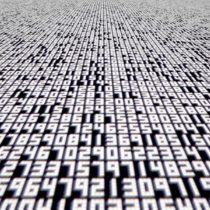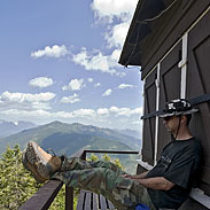Landscape Architecture for Landscape Architects › Forums › RESEARCH › Do we focus more on the technical side of design rather than the idea behind it?
- This topic has 1 reply, 8 voices, and was last updated 15 years, 9 months ago by
 Frank Varro.
Frank Varro.
-
AuthorPosts
-
March 8, 2010 at 6:49 pm #170572
 Frances MorrisParticipant
Frances MorrisParticipantHi
I was just inquiring into the question of whether people think digital technologies have made graphic design better, in that is it easier for us to show/interpret messages? (how has digital design changed the way we view graphic design?)
Or is the development of these new technologies given designers the capability to produce some of the best graphic designs to date? (its influence on graphic designers)Or perhaps you feel that digital technologies have taken away the emotion of a piece of art work and perhaps made it almost sterile?Has the knowledge of the software taken over the idea/concept? are ideas becoming absolute?If you could give your honest opinions and maybe some examples that would be great 🙂thanks xMarch 8, 2010 at 9:21 pm #170580 Frank VarroParticipant
Frank VarroParticipantI would say the ease of graphic design software, whether talking about Indesign, Dreamweaver, or Powerpoint, has had done two things. First, for people who know how to do good graphic design, they have more tools than ever, and can make some amazing pieces of work. Secondly, and more unfortunately, many of these programs have helper tools that can act as crutches, allowing people to think they are doing much better work than they are. You no longer need training to do sheet layouts, and you also can create sheets with very little time, sometimes leading to lazy design.
To me, I feel like its the same thing as with doing a site plan. There is something about pen on paper that connects you to the design more, so I always sketch out sheet layouts on paper to create my concepts, then go in and print out a mock-up, and only then decide if the design is what I want. Many people don’t take that time, and they end up with inconsistent powerpoint slides, color combination that reduce readability, and images that don’t quite line up.
I’ve seen enough BAD graphic design that I end up being VERY self-conscious about my own work. It makes me better, because I am more careful, but it also leads to wanting to redesign more often than necessary.
March 9, 2010 at 12:43 pm #170579 Andrew Garulay, RLAParticipant
Andrew Garulay, RLAParticipantSpeaking from the residential design perspective, technology has enabled inexperienced designers to make professional looking presentations. However, I feel like I benefit from that as an experienced designer (RLA) because I do focus on the idea behind the design and marginalise the graphic presentation by using black and white line work plans.
This makes ME more important than the technology and I focus on selling me. When residential landscape design/build or designers focus on the technology it leaves the impression that the computer did the work not only in the end product, but when trying to sell the design. More and more, I have focused on discussion, explanation, and description to sell my services. I close most of deals with prospects that I meet with using black & white plans and a portfolio of built work and I am generally more expensive than others in the same market.
March 9, 2010 at 3:32 pm #170578 ncaParticipant
ncaParticipantI’ve thought to myself more than a few times in the past few years that some of the new plazas and public spaces designed and built recently look like sketchup models- In my mind this is because the places look ‘plastic,’ and catalogue-y if that makes any sense. Is this because the designer relied too heavily on the computer through the conceptual design process? I dont know, maybe.
We had a project recently in which the client was given several pages of cut sheets of different graphic rendering styles to be used to market his project. We were only in schematic design at the time. The client, who is a very intelligent person, chose the most photorealistic 3D renderings on the sheets. We used a 3D renderer and got very realistic, highly detailed renderings back several months later. The only drawback was that they were highly detailed, photorealistic renderings…in schematic design. We were trying to have discussions about comprehensive planning, context, density, and access and ended up getting bogged down in fence heights, street signage, and paving color. There are certainly disadvantages to (over) use of technology. I do think the design suffers in most cases, though that’s not to say that there are not a limited number of designers who have adapted technology to fit their process.
I think the key is having an iterative, cyclical process, and strong basis for your decisions.
I think ‘graphic design’ and ‘architectural design’ are often confused or distorted to the point that one becomes or looks like the other. I see architectural components in a lot of graphic design and vice versa, but I’m not convinced that they should work symbiotically to get the best end product.
March 9, 2010 at 3:50 pm #170577 Gabriel HydrickParticipant
Gabriel HydrickParticipantIn DD, with a computer one cannot FEEL the design principles and elements come alive as they do when pencil dances with paper. For me, I rely strongly on FEELING the design. I just can’t on a computer. There is a connection between the hand and mind as my hand develops and traces the composition. Just me though.
Design for me is evoking a desired emotion in a given space. An experience. To do this well I have to FEEL it myself; transfer it into the design. It starts with me. If I can’t feel the design as the designer at the very beginning how is the desired reaction of my audience in the space supposed to be felt and experienced in the end product?
I think there is a value in renderings (hand) that leaves something for the imagination, where the rendering isn’t so absolute.
March 9, 2010 at 10:11 pm #170576 Chris WhittedParticipant
Chris WhittedParticipantPencil, pen, marker, mouse, keyboard, camera… they’re all tools. Means to an end. Digital technologies have made some aspects easier, yes. But it’s the use of those tools that makes something better, not the tool itself. Digital may save a great deal of time for a creative, talented designer, or allow them to move in new directions with new capabilities, but it’s not going to turn anyone into anything they weren’t before. With the sole exception of increasing the number of ‘lucky shots’ because it allows for so much more proliferation. 🙂
You can compare any two pieces of the same media or production methods and make your own judgement on whether it’s emotional or sterile, because you’ll find examples of both. It’s not the machine, it’s what drives or goes into the machine.
That said I find that sometimes, increasingly, digital does get in the way of design or ideas. As the tools become ever more complex and numerous, the focus shifts toward learning and keeping up with the tool instead of using it to express or carry out an idea. An individual may know what they want but not how to get it out of a particular tool.
March 9, 2010 at 11:08 pm #170575 Chad CrutcherParticipant
Chad CrutcherParticipantI’ve monitored this thread with intense interest. I’ve also refrained from tossing in my 2 cents because i have a very strong opinion. I hate the photo-realistic paste-up renderings that look and feel like scrapbook hobby work. I realize this is a harsh judgment. Yes, I have to cede there are probably good pieces that have been done, but, to me, the technology imparts a cold, calculated quality to the imagery that never carries the essence of the experience.
I am a drawer, as are many of you. I rest my case on the repeated and consistent response I get to my hand drawn work, usually from architects who have staffs that rely heavily on the box…”I like it so much more than our stuff! It is so much warmer and humane.”
I accept that techies fluent with the latest may characterize my preference as limited by my skill set. Maybe so. But lately, I have been spending time and money trying to improve my hand graphics rather than address my lack of computer skills. The why should be an easy one for the drawers….it is so much faster, easier, fun and in tune with my feelings when I use my hands in concert with my eyes and my heart, letting my arm sweep across the paper, imparting the emotion I feel into the composition. Artsy farsty, OK. But it works.
Do well doing good.
March 9, 2010 at 11:55 pm #170574 Andrew Garulay, RLAParticipant
Andrew Garulay, RLAParticipantThis is a good discussion. The common “thread to the thread” seems to be that graphic representation is important, but it does not substitute for knowledge and understanding about creating the built space.
I don’t use black & white line work because I think it works better. I use it primarily because I lacked hand drawing skills early in my attempt at becoming an LA in 1982 and went back to school in the mid-nineties because CAD was able to “clean up” my line work. I definitely lack confidence in any hand drawing tools including colored pencils and markers for god reason. I did not have a lot of exposure to computer modeling and rendering in the mid 90’s when in school, so I have not pursued that direction save for using solid color hatching in autocad for commercial site plans and landscape plans being presented to larger audiences (planning boards, conservation commissions, etc,…).
I have also learned that I can and do sell a good deal of residential design based on presenting all ideas from the perspective of “why” rather that “what”. The key to residential design is understanding why a designer is being considered. It comes down to one thing and one thing only. That is to remove doubt from the outcome of the project. In the end, graphic work can certainly go a long way toward achieving that, but early on it is all about making it clear that you undestand the prospects lifestyle, their needs and wants, can formulate ways of tying all of that together, and demonstrating a knowledge of their site. Most people are far more interested in the built end product than how you are going to display it prior to its being built. Clearly, a good display goes a long way toward getting them to understand that, but it is not the only way.
We all have different skill sets and different ways of communicating them successfully. In the end we have to do what works best for us as individuals, what works in our markets, and what is profitable.
I find that keeping graphics simple allows me to spend less time producing plans which keeps my cost down. That in turn makes it easier for me to dedicate more time to formulating the landscape rather than the drawing while still being able to sell the job and make money. Doing more with graphics would take me a great deal more time than many of you which would cut into my profit margin without increasing my sales. That is what works for me which is clearly different than how it would work for many others.
My normal residential project takes me an average of twenty hours including initial meeting and all else until the final product. My average fee is $1,500. This is specifically for my part time design business, not my work in the engineering office.March 10, 2010 at 12:30 am #170573 Jason T. RadiceParticipant
Jason T. RadiceParticipantAs someone who relies heavily on computers, even in schematic, it certainly makes selling the project to the client and to a municipal board MUCH easier. The old ‘cartoony’ style of presentations left a lot to the imagination and individual interpretation. The concepts were ‘optimized’ using artistic license to the point that the finished product ended up nothing like the concept drawings. And the boards knew that. (I still hand render CAD plans, though)
The computer allows me to refine the design and spot problems from the get-go, leading to fewer issues later on. It greatly increases productivity and efficiency.
That being said, the increase in productivity and efficiency has issues of its own. Increasingly, the commercial LA is (rather, used to be) expected to sling out projects one after another. Little time is given to properly analyze the site and explore design ideas. My graphic style is in fact, a result of not having an adequate budget, forcing me to be as quick and inexpensive as possible. I’d love to have the time to build accurate models and proper diagramming documents, for the most part; this is dying in the trenches of the commercial side of the industry.
-
AuthorPosts
- You must be logged in to reply to this topic.


